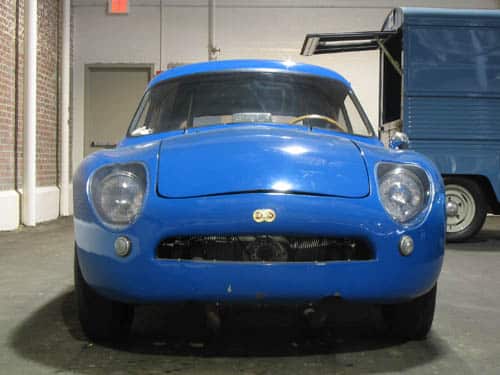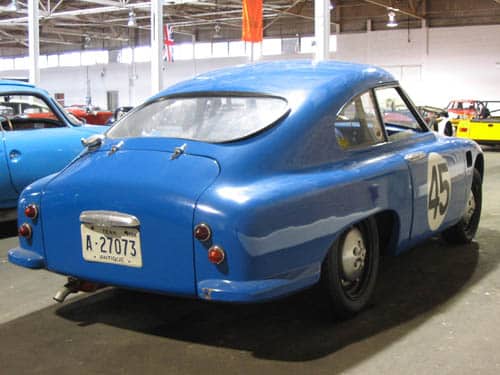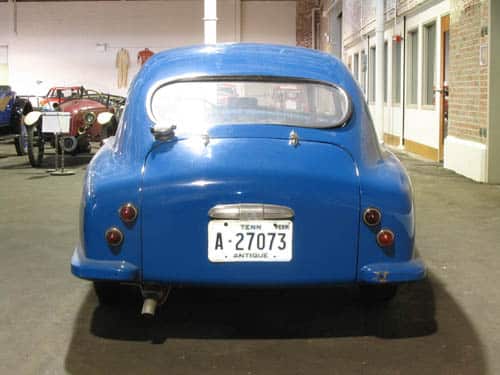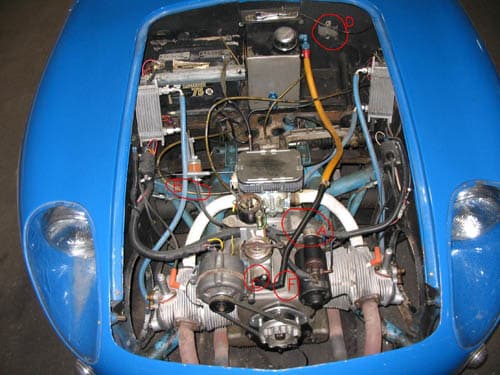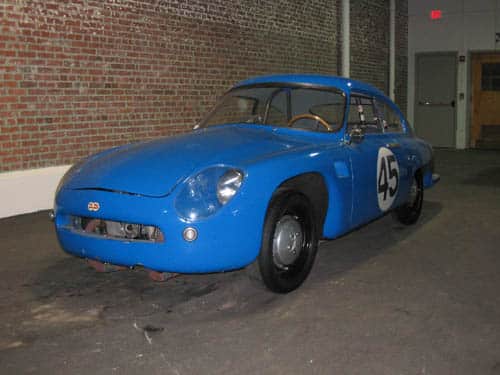
Deutsch-Bonnet HBR5- 1955
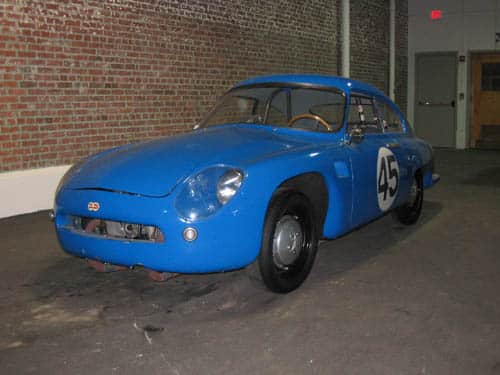
René Bonnet was a self-made engineer with a passion for competition and Charles Deutsch was a trained body designer who managed a custom coach works in Champigny-sur-Marne, close to Paris. Their partnership was unofficial because Deutsch was a civil servant who oversaw all French roads, and French law prohibited civil servants from owning a business. They started as Deutsch-Bonnet, shortened to DB in 1947.
Early DB racing cars used relatively small 2-cylinder Panhard engines. They were perfectly tuned for racing in the under 1-liter classes by using ultra-light and aerodynamically streamlined fiberglass-reinforced polyester car bodies. That skin was built by GAP (Générale d’Applications Plastiques), a composites subsidiary of Matra, run by Bonnet’s friend and fellow racer, André Moynet. The combination of the sleek fiberglass body sealed on a lightweight steel backbone frame gave their cars an excellent power-to-weight ratio and resulted in a high top speed for the class.
The 1400 pound, 65-horsepower HBR5 shown here was DB’s Grand Touring model, intended for more luxury-minded mass-market appeal. Only about 430 of the HBR5 models were built across the production run from 1955 until 1961, making this an extraordinarily rare car. These cars were hand-assembled and no two were exactly alike. The HBR5 is considered to be only the second ‘series production’ automobile crafted with a fiberglass body (following Chevrolet’s Corvette).
Charles and René had their differences. Deutsch remained loyal to Panhard engines, while Bonnet favored Renault engines. The two also debated whether their cars should continue to be front-engined/front-wheel-drive or mid-engined. The end came in 1961, when these disagreements led to the dissolution of DB. Deutsch would go on to become an independent engineering consultant whose work included the Bugatti circuit at Le Mans. René Bonnet continued to make cars under Automobiles René Bonnet, until it was taken over by Matra.
Specifications:
Manufacturer: DB Deutsch-Bonnet
Country of Origin: France
Drivetrain Configuration: Front engine, front wheel drive
Engine: 900cc, 2-cylinder, air cooled
Transmission: 4-speed manual
Top Speed: 100 miles per hour
Years of Production: 1955-61
Number Produced: The number of DB’s built is unknown; believed to be under 2000
Original Cost: $_____

